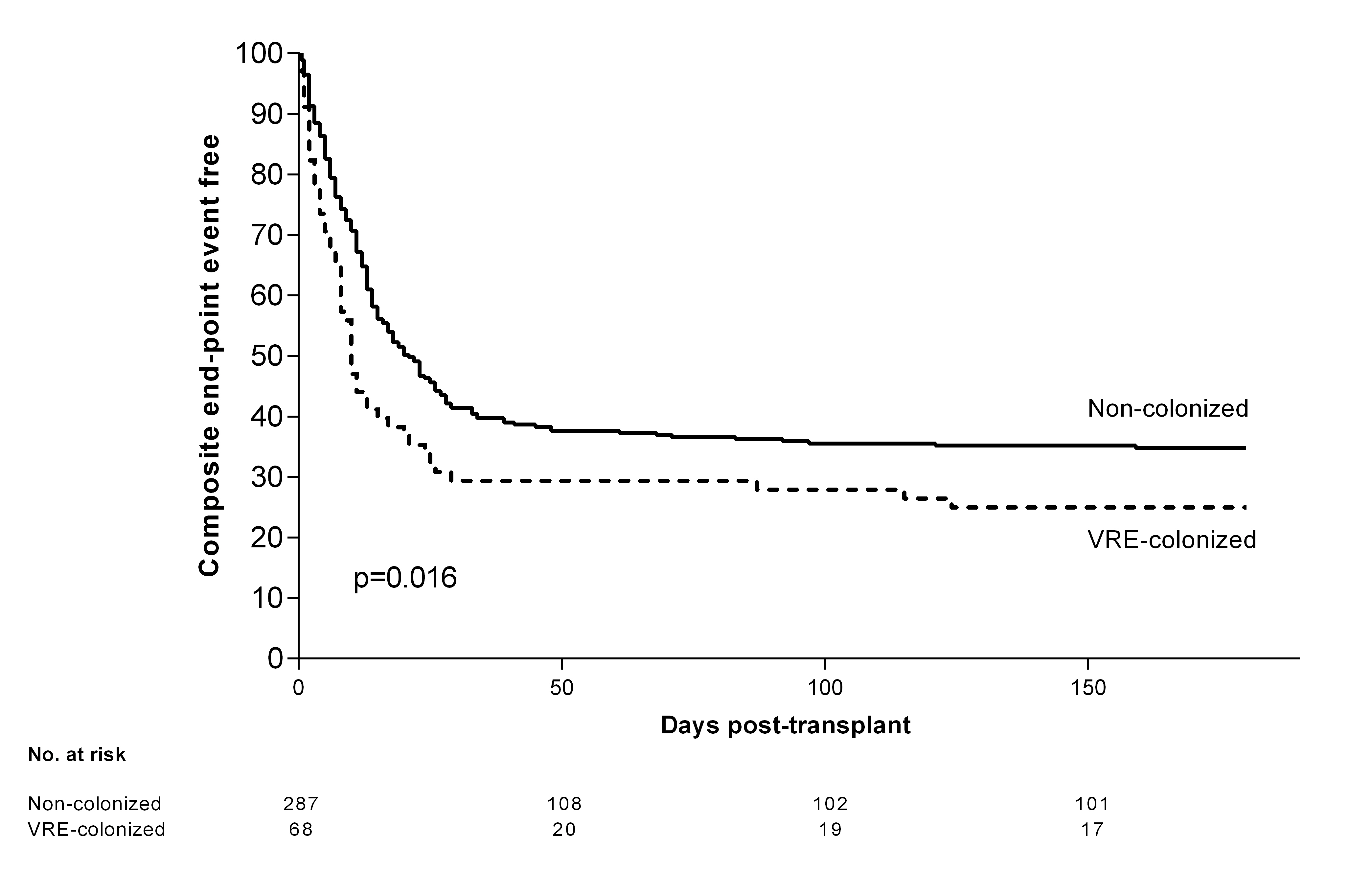Impact of Vancomycin-Resistant Enterococci Gut Colonization on Liver Transplant Outcomes
University of Alberta, Edmonton, AB, Canada
Meeting: 2019 American Transplant Congress
Abstract number: A359
Keywords: Liver transplantation, Outcome
Session Information
Session Name: Poster Session A: Transplant Infectious Diseases
Session Type: Poster Session
Date: Saturday, June 1, 2019
Session Time: 5:30pm-7:30pm
 Presentation Time: 5:30pm-7:30pm
Presentation Time: 5:30pm-7:30pm
Location: Hall C & D
*Purpose: Vancomycin-resistant enterococci (VRE) colonization is common in liver transplant candidates. In addition to the risk of invasive enterococcal infections, dominance of VRE colonization in the gut may lead to low microbiota diversity, which may impact transplant outcomes. The purpose of this study is to evaluate the impact of VRE colonization pre-liver transplant on 6-month post-transplant outcomes.
*Methods: We conducted a retrospective study of liver transplant patients at the University of Alberta Hospital, Edmonton, between September 2014 and December 2017. Perioperative antibiotic prophylaxis consisted of Imipenem plus Linezolid. VRE colonization was determined pre-transplant by culture-based screening. Composite end-point of complicated liver transplantation included: acute kidney injury in the first 30 days, clinically significant infections, acute rejection and mortality at 6 months.
*Results: We included 355 liver transplants, 67% males, mean age 51.3. The prevalence of VRE colonization pre-liver transplant was 18.7% (68/355). VRE colonized patients had higher MELD scores pre-transplant than non-colonized patients (mean MELD 25.5 vs 21.1, p<0.001), but other variables were similar between both groups. The association of VRE colonization with pre-defined endpoints was: acute kidney injury at 30 days (65% vs 52%, p=0.008), bacterial infection (28% vs 18%, p=0.069), acute rejection (12% vs 9%, p=0.558) and death (7.4% vs 5.6%, p=0.776). Eight patients had VRE infection: 3 VRE colonized and 5 non-colonized pre-transplant. Regarding composite end-point of complicated liver transplantation, VRE colonization was significantly associated with complications at 6 months (75% versus 65%; Figure 1, p=0.016). At transplant, VRE colonization predicted better than MELD score the composite end-point of complicated liver transplantation at 6 months, both adjusted by age (VRE colonization: HR 1.450, 95%CI 1.063-1.977, p=0.019; MELD: HR 1.01, 95%CI 0.997-1.027, p=0.119).
*Conclusions: VRE colonization pre-transplant was associated with higher risk of complications during the first 6 months after a liver transplantation. These results might help optimizing the management of these patients in the peri-transplant period, including renal-protective strategies in VRE+ patients.
Figure 1. Kaplan-Meier survival analysis of the probability of composite end-point event free according to VRE colonization.
To cite this abstract in AMA style:
Chiang D, Dingle TC, Belga S, Kabbani D, Walter J, Abraldes JG, Cervera C. Impact of Vancomycin-Resistant Enterococci Gut Colonization on Liver Transplant Outcomes [abstract]. Am J Transplant. 2019; 19 (suppl 3). https://atcmeetingabstracts.com/abstract/impact-of-vancomycin-resistant-enterococci-gut-colonization-on-liver-transplant-outcomes/. Accessed December 19, 2025.« Back to 2019 American Transplant Congress

